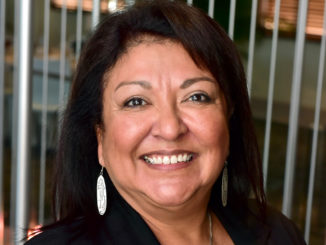Washington state’s tribes have long been major contributors to the state economy. A new study released in June shows that tribal contributions continue to grow rapidly and diversify.
Based on 2023 data, the new study shows that growing tribal economies fund schools, housing programs, health clinics, environmental rehabilitation, infrastructure development, firefighting, law enforcement, and other public services for Indians and non-Indians alike. Even after pandemic-driven closures of casinos and other fiscally critical tribal enterprises, tribal economies have bounced back and kept pace with the state’s economic growth.
In 2023, Washington’s 29 tribal governments generated at least $7.4 billion in gross state product, up from $6.6 billion in gross state product in 2020. Tribal operations account for more than $3.9 billion in wages and benefits, and tribal economic activity accounts for $1.5 billion in total taxes, up from $1.2 billion only three years earlier. Altogether, tribal economic activity represents $1 out of every $100 circulating through Washington’s economy.
Tribes in Washington directly employ at least 29,421 people, making them (collectively) the 8th largest employer in the state. More than 52,300 jobs statewide can be traced back to tribal economic activity, and 61 percent of those jobs are held by non-Indian employees.
These benefits derived from the tribal economy are enumerated in a fresh economic analysis conducted by tribal economics experts Amy Besaw Medford and Jonathan B. Taylor on behalf of the Washington Indian Gaming Association (WIGA). Building on a previous 2022 report, this new accounting shows tribes are large employers, fiscally independent governments, and contributors to the public good in Washington.
Perhaps most importantly, tribal investments over the past 30 years have yielded remarkable progress, raising income, reducing poverty, improving employment, and spurring significant gains in college attainment and housing adequacy.
Since 1990, American Indians living on reservations in Washington experienced a remarkable 59 percent increase in real income. The number of Native Americans on tribal reservations in Washington with college degrees has doubled during that span. The indicators of success are widespread: Family poverty is down 46 percent; child poverty is down 32 percent; unemployment is down 47 percent; overcrowding is down 26 percent; and the number of homes without complete plumbing has been cut in half.
The study attributes these gains to the power of tribal self-government. More than $7 in $10 of tribal revenue stems from their sovereign powers. The report notes, “It is now apparent that recognizing and supporting tribal self-government in everything from natural resource management to housing policy is what changes Indian life for the better.”
These gains have occurred despite the unique limitations tribal governments have in their ability to levy taxes. To fund essential services, tribes generally use income from their government-owned enterprises, and the revenues generated largely stay in the state and boost local economies far beyond reservation boundaries. Gaming revenues are key to that, but tribal economies are increasingly diverse. There are all sorts of tribal businesses across Washington, encompassing retail, entertainment, agriculture, fisheries, and other sectors of the economy.
Still, the report underscores that much more work needs to be done in Indian Country. The relative economic position of Indians in Washington remains well below that of non-Indian residents. Median income for American Indians is still less than two-thirds of the statewide average, unemployment is twice as high, and family poverty rates are four times higher.
These persistent disparities highlight how important it is that tribes continue to defend and strengthen their efforts at self-reliance, and why tribal gaming revenues are so important to addressing the historical inequities that have held back Native Americans here for so long.




